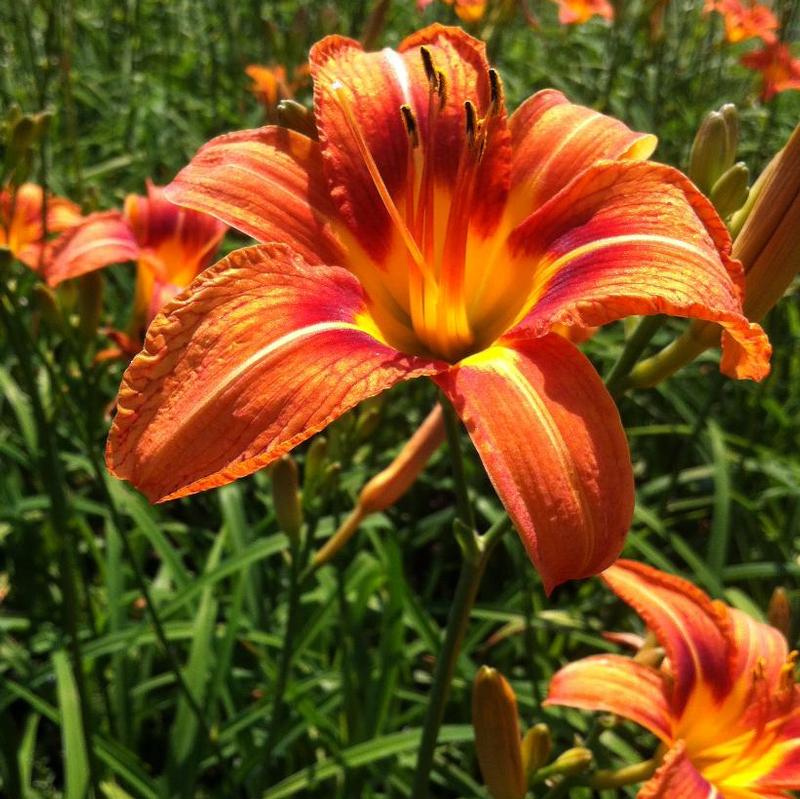« Previous Plant | Next Plant »
Hemerocallis fulva
Tawny Daylily (Common Daylily, Orange Daylily)
Rusty-orange-red blooms, usually with darker median zones and stripes.
- » AKA Hemerocallis lilioasphodelus var. fulva
- » Orange flowers with a slightly darker orange eyezone
- » Sword-like leaves, arranged in pairs, grow at the base of the plant
- » Used for naturalizing
- » Bloom Time: mid-July to mid-August
- » Flower Height: up to 150 cm
- » Flower Size: 14 cm
- » Flower Type: Triploid
- Category:Perennials
- Hardiness Zone:3
- Height:125-150 cm
- Spread:90-110 cm
- Bloom Color: Orange
Attracts Wildlife
| • | Attracts Butterflies |
Growth Rate
| • | Fast |
Critter
| • | Rabbit Resistant |
Flowering Time
| • | Summer |
Habit
| • | Clumping |
Foliage Color
| • | Green |
Planting instructions
| • | Container Plants |
Additional Information about Hemerocallis fulva
The name "hemerocallis" is derived from the Greek words for "day" and "beautiful," referring to the individual flowers lasting for about 24 hours.
Both the flower buds and open flowers of the daylily are edible, with the petals and sepals frequently used for colour contrast in salads.
Introduced and has naturalized throughout most of eastern North America.
Growing & Maintenance Tips for Hemerocallis fulva
Hemerocallis grow best in an average to moist, well-drained soil, in full sun or partial shade. Daylilies with very dark flower colours benefit from more shade. They are adaptable to many soil conditions, even heavy clay soils, and once established, will tolerate heat and drought. Prune the flower stalks down after blooming to improve the overall appearance and lengthen bloom time. They spread (some slowly, some more aggressively) by underground rhizomes. Easy to grow.
